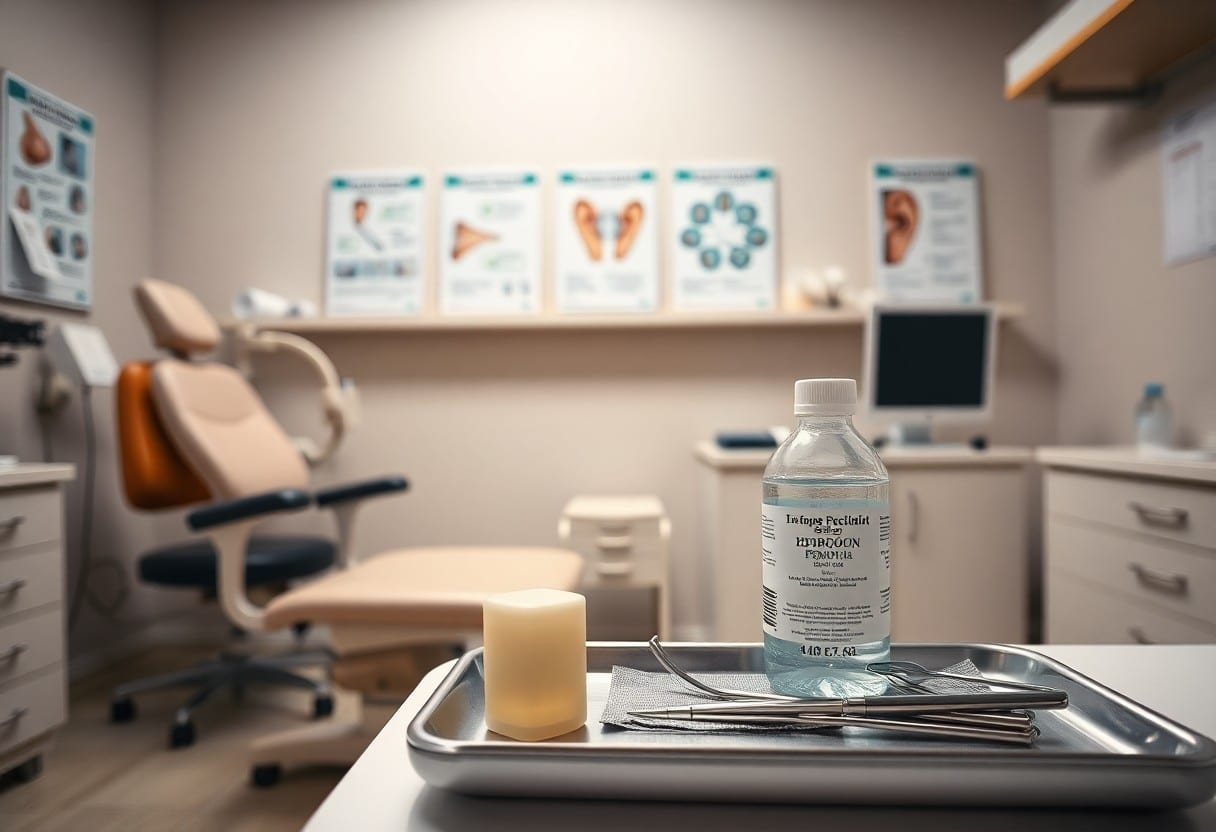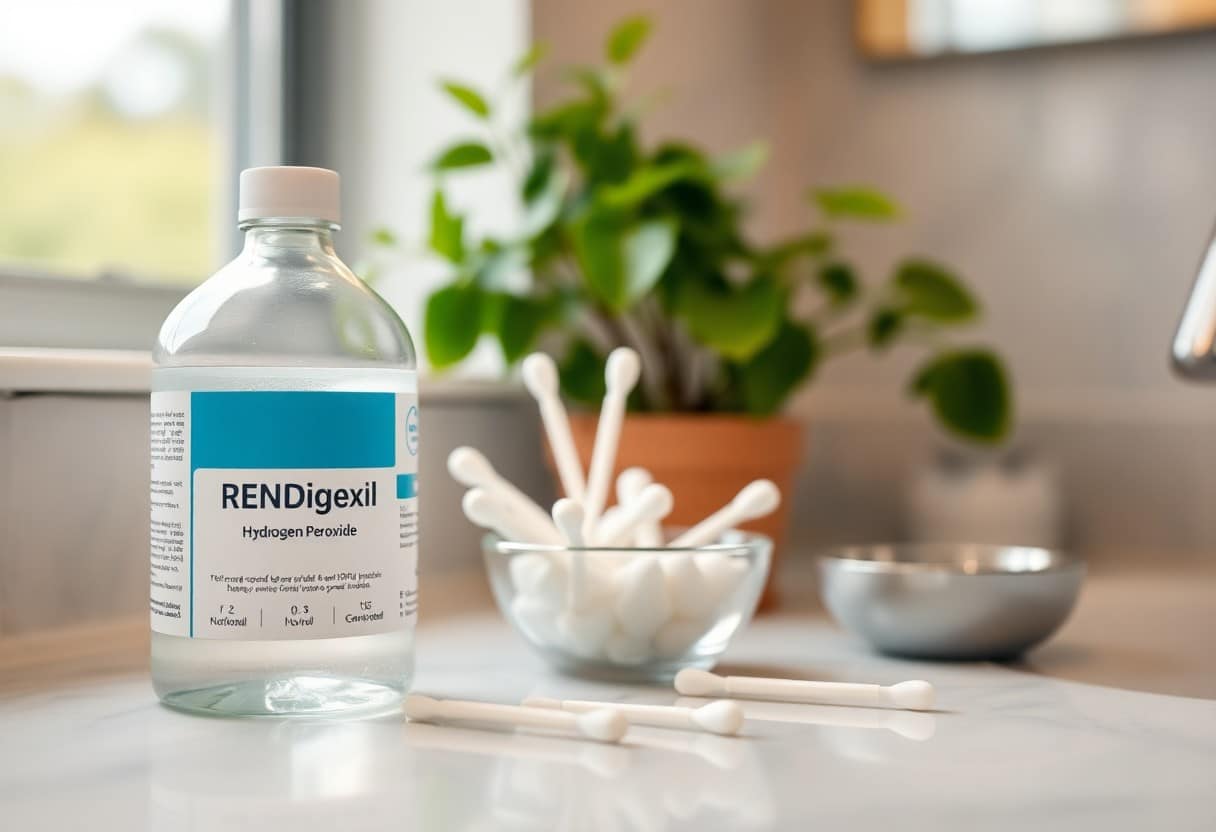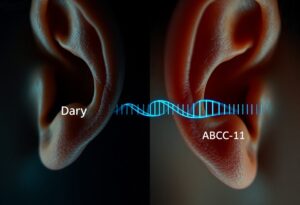You may have heard about using hydrogen peroxide to manage earwax buildup, but is it really a safe option for your ears? This blog post will explore the benefits and potential risks of using hydrogen peroxide for earwax removal, helping you make an informed decision about your ear health. With various opinions in the medical community, it’s imperative to understand how this common household product can affect your ears and if it’s appropriate for your situation.
Key Takeaways:
- Hydrogen peroxide can help soften and remove earwax, but it should be used with caution.
- Excessive or improper use may lead to irritation, infection, or damage to the ear canal.
- Consult a healthcare professional before using hydrogen peroxide for earwax removal, especially if you have existing ear problems.
The Chemistry of Hydrogen Peroxide: What Makes It Effective?
The Active Ingredient: Breaking Down Hydrogen Peroxide
Hydrogen peroxide (H2O2) is a simple yet powerful compound comprised of water and an additional oxygen molecule. This extra oxygen atom is what gives hydrogen peroxide its unique chemical properties, making it an effective oxidizer. When it comes into contact with organic materials, such as earwax, hydrogen peroxide breaks down into water and oxygen, leading to a foaming action that aids in dislodging and softening earwax for easier removal.
How It Interacts with Earwax Buildup
Upon application to the ear, hydrogen peroxide reacts with the cerumen in your earwax, generating oxygen bubbles that help to lift and dissolve the wax. This bubbling action can penetrate the earwax, effectively breaking it apart and facilitating its removal. This process not only helps in loosening the earwax but also reduces any potential blockage, providing you with a clearer auditory pathway.
The interaction between hydrogen peroxide and earwax is particularly significant due to its effervescence. As the hydrogen peroxide breaks down, the release of oxygen bubbles creates a physical agitation within the ear canal. This helps in dislodging compacted earwax that can cause discomfort or hearing issues. In specific cases, such as when earwax becomes particularly hard or obstructive, this action can effectively lessen the discomfort and enhance cleansing, making it a potentially useful home remedy. However, understanding how to use it correctly and the appropriate dilution is vital to mitigate any risks, ensuring safety during your ear care routine.

Medical Perspectives: What ENT Specialists Say About Earwax Removal
The Role of Earwax and Its Functions
Earwax, medically known as cerumen, serves imperative purposes in maintaining ear health. It protects your ears from dust, bacteria, and foreign particles while providing lubrication to the ear canal. This natural substance also has antimicrobial properties that help prevent infections. It forms a barrier, trapping debris and ensuring that your ear canal remains clean and free from irritation. Thus, some buildup is normal and even beneficial for your auditory health.
The Risks and Benefits of Using Hydrogen Peroxide
Hydrogen peroxide can effectively soften and dislodge earwax, making it easier for natural drainage. However, using it carries risks, such as irritation of the ear canal, potential allergic reactions, and, in some cases, perforation of the eardrum if improperly administered. While some individuals report successful cleansing, ENT specialists advise caution and suggest consulting a professional for safe earwax removal practices.
Balancing the risks and benefits of hydrogen peroxide involves understanding your individual ear health and how your body responds to this solution. Some may find relief from excess earwax with diluted hydrogen peroxide, which can aid in softening the wax for easier removal. However, misuse can lead to complications, including damage to sensitive ear tissues and an increased risk of infections. Regular use may not be advisable; thus, professional guidance is recommended before attempting at-home remedies.

Unpacking the Myths: Common Misconceptions About Hydrogen Peroxide for Ear Care
“It’s Just Another Disinfectant” – Clarifying Its Role in Ear Health
Hydrogen peroxide is often viewed merely as a household disinfectant, but its role in ear health extends beyond that. When used properly, it can help to break down earwax and may assist in cleaning the ear canal. However, this does not mean it’s a general-purpose treatment; improper use can lead to irritation or damage, underscoring the need for careful application tailored to ear care.
“All Concentrations Are Safe” – Understanding the Dangers of Overuse
Not all concentrations of hydrogen peroxide are suitable for ear use, and overuse can lead to adverse reactions. Higher concentrations, particularly those above 3%, can cause irritation, pain, and even burns in sensitive ear tissues. To safely use hydrogen peroxide, it’s imperative to stick to diluted solutions specifically designed for ear care or consult with a healthcare professional for guidance.
Inappropriate concentration levels can introduce significant risks to your ear health. For instance, using 10% hydrogen peroxide may seem effective for cleaning, but can lead to severe irritation, inflammation, or damage to the delicate skin in your ear canal. Adhering to the commonly recommended hydrogen peroxide concentration of 3% or lower provides a safer alternative while treating excess earwax without the associated hazards of higher concentrations. Always consider how you can minimize risk with any ear care product.
Step-by-Step Guide: How to Safely Use Hydrogen Peroxide for Earwax Removal
| Step | Description |
|---|---|
| 1 | Gather necessary materials: 3% hydrogen peroxide, a dropper, a clean towel, and a bulb syringe. |
| 2 | Lie on your side with the affected ear facing upward. |
| 3 | Using a dropper, place 5-10 drops of hydrogen peroxide into your ear. |
| 4 | Allow the solution to bubble for about 5-10 minutes. You may feel a fizzing sensation. |
| 5 | After bubbling, sit up and let the liquid drain onto a towel. |
| 6 | Flush your ear gently with warm water using a bulb syringe if needed. |
| 7 | Dry your ear thoroughly with a towel. |
Recommended Dilution Ratios for Home Use
The ideal dilution for hydrogen peroxide for earwax removal is typically around 3%. This concentration effectively breaks down earwax without being overly harsh on the sensitive skin inside the ear canal. Mixing it with an equal part of water can further reduce irritation, but it’s necessary not to exceed the 3% concentration during application.
Proper Application Techniques to Minimize Risks
Following appropriate techniques ensures safe use of hydrogen peroxide in your ear. Keep your head tilted to avoid overflow, utilize a dropper for precise application, and avoid inserting anything into the ear canal. Always listen to your body; if you feel pain or discomfort, stop the process immediately.
Possible Side Effects: Navigating the Risks of Ear Cleaning
Common Reactions: What to Expect After Application
After applying hydrogen peroxide, you might experience mild sensations such as fizzing or bubbling in the ear, a common sign of the solution breaking down earwax. Some users report temporary discomfort or slight dizziness. These reactions typically subside quickly, but you should monitor your response closely, as individual sensitivity varies.
When to Seek Medical Attention: Recognizing Warning Signs
Be alert for signs indicating a need for medical consultation, such as persistent pain, discharge from the ear, or significant hearing loss. If you experience these symptoms, they may suggest an underlying condition or an adverse reaction to the hydrogen peroxide. Prompt evaluation can help prevent complications.
Persistent pain that lasts more than a few minutes or escalates in severity may indicate a problem. Discharge, especially if it is colored or foul-smelling, can signify an infection. Significant hearing loss or persistent dizziness following use warrants immediate attention, as it may affect your auditory health long-term. Early intervention can lead to better outcomes and ensure your ears remain healthy.
Alternatives to Hydrogen Peroxide: Exploring Other Earwax Removal Methods
Natural Remedies: Are They Safer?
Natural remedies such as olive oil, mineral oil, or warm water may offer a gentler alternative for earwax removal. These options can help soften the wax, making it easier for your body to expel. Unlike hydrogen peroxide, they typically pose less risk of irritation or complications, appealing to those wanting to avoid harsh chemicals in delicate areas. However, effectiveness can vary, and patience is required as these methods might take longer to work.
Professional Treatments: When to Consider a Doctor’s Visit
When natural methods fail or earwax buildup leads to discomfort, a visit to a healthcare professional should be considered. Signs such as ear pain, hearing loss, or persistent blockage indicate that self-treatment may be insufficient. Professionals can provide innovative treatments, including microsuction or irrigation, ensuring safe and effective removal of earwax.
If you experience symptoms like dizziness, tinnitus, or chronic discomfort, timely professional intervention can prevent further complications. Physicians often utilize specialized equipment to safely remove earwax, significantly reducing the risks associated with at-home methods. Relying on expert care ensures not only effective treatment but also peace of mind regarding ear health.
Final Thoughts: Weighing Convenience Against Safety in Ear Care Practices
Understanding Risks and Benefits
Using hydrogen peroxide for earwax removal may provide immediate relief and convenience, yet it carries certain risks that cannot be overlooked. While a 3% solution is often deemed safe for occasional use, overuse can lead to irritation or damage to the delicate ear canal. You might find it effective for breaking up wax, but individuals with certain conditions, such as a history of ear infections or perforated eardrums, should approach this method with caution.
Assessing Alternatives
Natural remedies like olive oil or mineral oil present safer alternatives for earwax removal. Research suggests that these substances can help soften the wax without the harsher effects associated with hydrogen peroxide. You could consider incorporating these options into your ear care routine for a gentler approach, especially if you experience sensitivity or if your ears clean themselves adequately with time.
Prioritizing Professional Advice
Consultation with a healthcare professional should also be at the forefront of your ear care practices. Audiologists and otolaryngologists can provide tailored recommendations based on your unique ear health needs. They might suggest routine cleanings or prescribe solutions that are more effective, highlighting the advantage of surrendering some convenience for safety.
Establishing Personal Best Practices
You control your ear health by maintaining a balance between effective cleaning and preserving the delicate tissues inside your ears. Establish a routine that prioritizes safety, using methods that suit your lifestyle while minimizing risk. This proactive approach will lower the chances of ear complications in the future while ensuring that your hearing remains optimal.
FAQ
Q: Is hydrogen peroxide safe for earwax removal?
A: Hydrogen peroxide can be safe for earwax removal when used properly and in diluted form. It helps to soften the earwax, which can assist in its natural removal. However, it is important to avoid using it if you have a perforated eardrum or any existing ear infection.
Q: How should I apply hydrogen peroxide for earwax?
A: To use hydrogen peroxide for earwax removal, mix equal parts of 3% hydrogen peroxide and water. Use a dropper to place a few drops in the affected ear while lying on your side. Allow it to bubble for a few minutes, then tilt your head to let it drain out.
Q: What are the potential risks of using hydrogen peroxide in the ear?
A: Potential risks include irritation, dryness, or damage to the ear canal if used excessively or incorrectly. Individuals with sensitive ears or pre-existing conditions should consult a healthcare provider before use.
Q: How often can I use hydrogen peroxide for earwax removal?
A: It is generally recommended to use hydrogen peroxide for earwax removal no more than once a week. Overuse can lead to irritation or disrupt the natural earwax production process.
Q: What should I do if I experience discomfort after using hydrogen peroxide?
A: If you experience discomfort, pain, or an allergic reaction after using hydrogen peroxide, discontinue use immediately. Consult a healthcare professional for further evaluation and advice.



